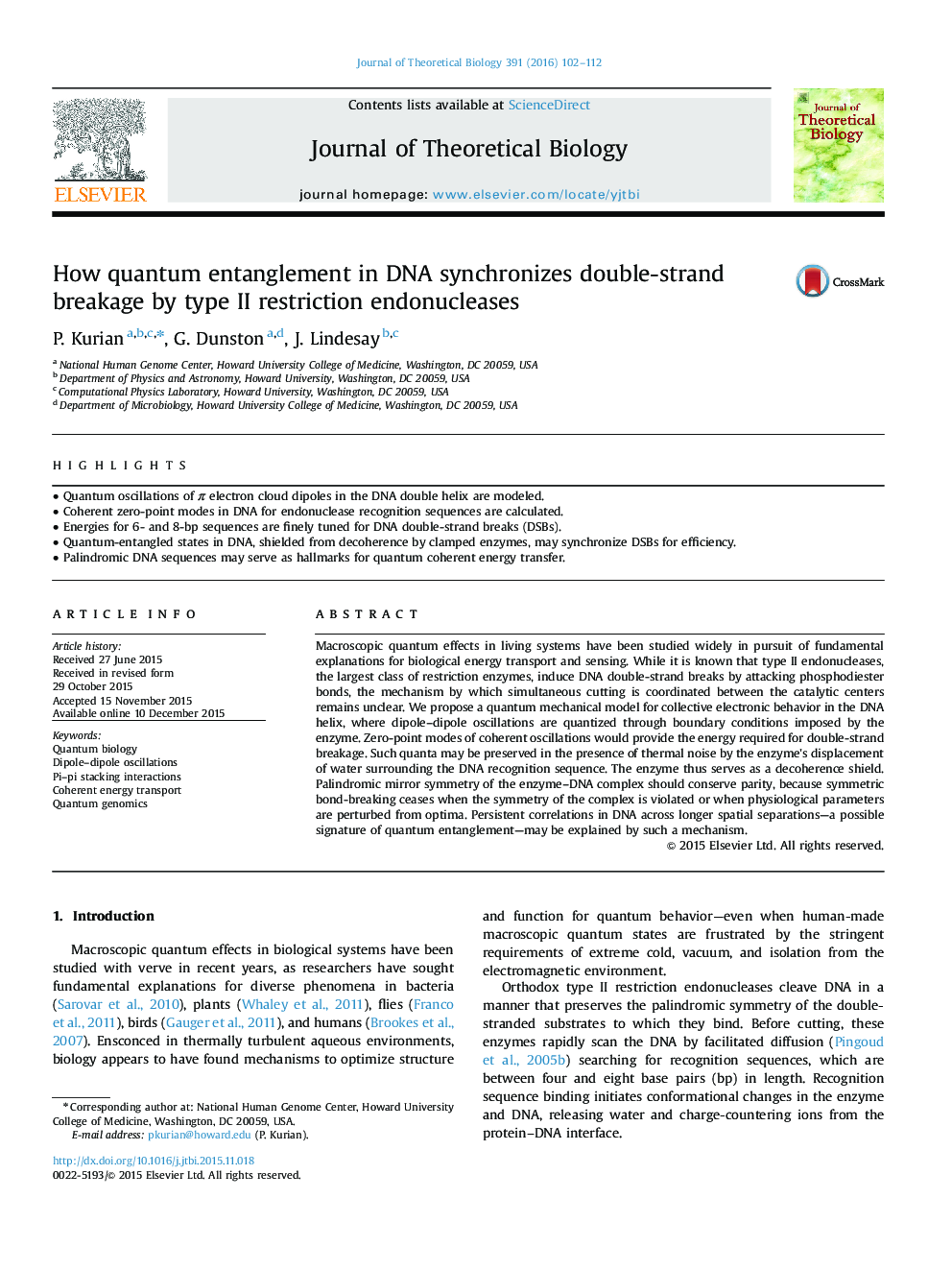| Article ID | Journal | Published Year | Pages | File Type |
|---|---|---|---|---|
| 4495936 | Journal of Theoretical Biology | 2016 | 11 Pages |
•Quantum oscillations of π electron cloud dipoles in the DNA double helix are modeled.•Coherent zero-point modes in DNA for endonuclease recognition sequences are calculated.•Energies for 6- and 8-bp sequences are finely tuned for DNA double-strand breaks (DSBs).•Quantum-entangled states in DNA, shielded from decoherence by clamped enzymes, may synchronize DSBs for efficiency.•Palindromic DNA sequences may serve as hallmarks for quantum coherent energy transfer.
Macroscopic quantum effects in living systems have been studied widely in pursuit of fundamental explanations for biological energy transport and sensing. While it is known that type II endonucleases, the largest class of restriction enzymes, induce DNA double-strand breaks by attacking phosphodiester bonds, the mechanism by which simultaneous cutting is coordinated between the catalytic centers remains unclear. We propose a quantum mechanical model for collective electronic behavior in the DNA helix, where dipole–dipole oscillations are quantized through boundary conditions imposed by the enzyme. Zero-point modes of coherent oscillations would provide the energy required for double-strand breakage. Such quanta may be preserved in the presence of thermal noise by the enzyme׳s displacement of water surrounding the DNA recognition sequence. The enzyme thus serves as a decoherence shield. Palindromic mirror symmetry of the enzyme–DNA complex should conserve parity, because symmetric bond-breaking ceases when the symmetry of the complex is violated or when physiological parameters are perturbed from optima. Persistent correlations in DNA across longer spatial separations—a possible signature of quantum entanglement—may be explained by such a mechanism.
